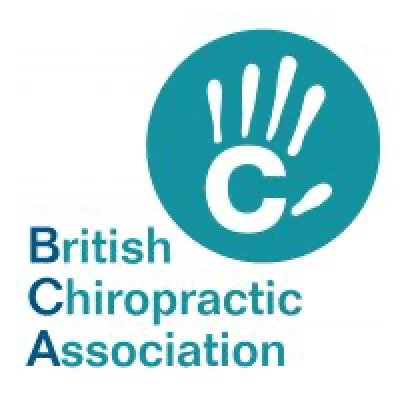What Is Pilates?
What Is Pilates?
When I worked in London, I ran weekly with a colleague of mine around Richmond park. It was lovely. She only ran once a week with me. However, she suddenly seemed to be running faster and faster, leaving me panting and puffing behind. Eventually, I quizzed her on her performance. I wondered if she was sneaking some additional practice in but no, she said that she had recently started pilates. She felt it was becoming easier to run. I couldn’t believe it! So what was this pilates thing and is it true, can it make you run faster?
So, what actually is Pilates?
Pilates is an exercise technique designed to promote core stability, strength, flexibility, balance, endurance, postural and body awareness. Essentially, it emphasises the importance of a central core stability that surrounds the pelvis and lower back. It aims to promote efficient and effective movement.
The pilates method
The pilates method was a system developed in the early 20th Century by Joseph Pilates. I love the story of Joseph Pilates and find it incredible that as a child, he spent most of his childhood fighting rickets, asthma and Rheumatic fever. He spent hours studying how animals moved, yoga, martial arts, and the exercise regimes of the ancient Greeks and Romans. By his teens, he had restored many of his physical impairments and was amazing at numerous sports such as skiing, diving and gymnastics. He went on to work as a professional boxer, circus performer and trained detectives in self defence.
When World War I broke out, Joseph trained as an orderly in a hospital in the Isle of Man. He could not believe how the ill people were bed bound, doing no exercise. He helped encourage these patients to perform simple exercises and they started to improve faster. The doctors allowed him to progress these exercises to further improve patient’s health, strength and mobility. Joseph did so using resistance via springs from old hospital beds.
After the war, Joe developed his exercises within the dance world and opened his first studio around 1925 in New York. He came to believe that the “modern” life-style, bad posture, and inefficient breathing lay at the roots of poor health and movement imbalances. Additionally, he believed that these abnormal patterns could be altered by concentrating on precision of movement, awareness of breath control, and a continued flowing movement. Ultimately, he devised a series of exercises and training techniques, that could be performed on the floor (matwork pilates) or on machines (reformer pilates) to help encourage efficient movement.
But, does pilates really work?
There are hundreds of studies that have looked into the effectiveness of pilates. There is a general consensus that pilates based exercises are superior to minimal intervention for pain relief. It has also been shown that pilates plays an important role in injury prevention as well as rehabilitation post injury.
For example, a study in 2013 by Notarnicola investigated daily pilates exercise vs. inactivity for patients with lower back pain. The pilates group performed 1 hour of pilates 5 days a week for 6 months. However, the inactivity group continued with their normal daily activities. Pain, disability and physical and psychological perception of health significantly improved in the individuals who did the daily pilates sessions.
A similar study in 2013 looked at a 6 week pilates program to help patients with persistent neck pain. Again statistically significant improvements were noted at 6 weeks and 12 weeks.
How often should you practice?
Pilates is safe enough to do every day. Joseph used to say to do it three times a week. It depends on your goals, and whether you are using the exercises to help an injury, improve performance or prevent injury.
What if I’m in pain or in recovery?
In 2013, Wells performed a piece of research that recommended people with persistent back pain should undertake supervised physio-led pilates sessions for 30-60 minutes twice a week for 3-6 months. They suggested that people with persistent lower back pain would benefit from individualised assessment and exercise prescription, supervision and integration of exercises into their daily activities. Their research also demonstrates that pilates exercises require body awareness, breathing, movement control, education and posture. These are all important components to help you move well and hence to run and walk well.
From my clinical experience with treating patients with a variety of pain, I tend to see a significant improvement of pain within 3-6months. Of course this applies to those patients that have worked hard at a physio-led pilates program under supervision and independently at home. These time scales are hugely dependent on severity of injury, length of time the patient has had pain and other past medical history that can affect recovery times. Occasionally recovery times can be closer to 12 months and sometimes a little longer.
If you have finished recovering and want to maintain your performance, build further functional gains or minimise your risk of further injury, 2-3 sessions per week are recommended. However, some gains have been noticed with performing pilates just once a week. Although, if you are after quicker and more significant gains, an extra pilates practice or two is more effective.
What are the benefits?
A common misconception is that pilates only works on the core stabilising muscles. These are often thought to include the abdominals around the lower back and pelvis. However, we also have important stabilising muscles around the hips, back, shoulders and neck. For runners and walkers it is particularly important to have strong lower abdominals. Although, good hip, knee and foot stability muscle function is also important. This is so that excess stress isn’t placed through the lower back and lower limb joints, which can lead to injury. Pilates exercises not only help improve the efficiency of these stability muscles but also help improve joint mobility and muscle length. The exercises move the joints through their available ranges, which can help encourage a more fluid running and walking pattern. This enables a greater ease of stride to be achieved.
What is Physio-led pilates?
I practice the APPI (Australian Physiotherapy and Pilates Institute Approach). Two Australian Physiotherapists established the APPI over 20 years ago.
At this time, some important research looked into the clinical relevance of pilates exercises for clients with back and pelvic pain. It found that pilates exercises were not being optimised for these patients. Pilates was found to be more successful if the traditional movements were broken down and modified. The exercises should be considered in terms of how the spine and muscles work before and after pain. Research now allows us to identify which exercises target specific muscles in a functional way.
The APPI approach analyses every pilates exercise on its effectiveness for a patient that has suffered an injury. Each exercise is then modified appropriately for that individual. This allows patients to be trained correctly from an injured state to a fully fit and functional state.
I have certainly found it a very useful tool in my physiotherapy practice to help restore my patients muscle imbalances and functional movements. Practicing myself, it was the one thing that really helped me recover from an episode of shoulder pain.
Please get in touch to find out more about Pilates and be taught the core principles. Philippa can provide a personalised assessment to address your individual difficulties and identify your functional goals.
Feel free to email Philippa directly at philippa@tivolichiropractic.co.uk.
We’d love to help you function at your best! We want you to be able to really enjoy performing your daily activities. Whether this is gardening, looking after your grandchildren, walking or running, we’re here to help.
Read our next article by Women’s Health Physio, Louise, to learn all about bothersome bladders.




























